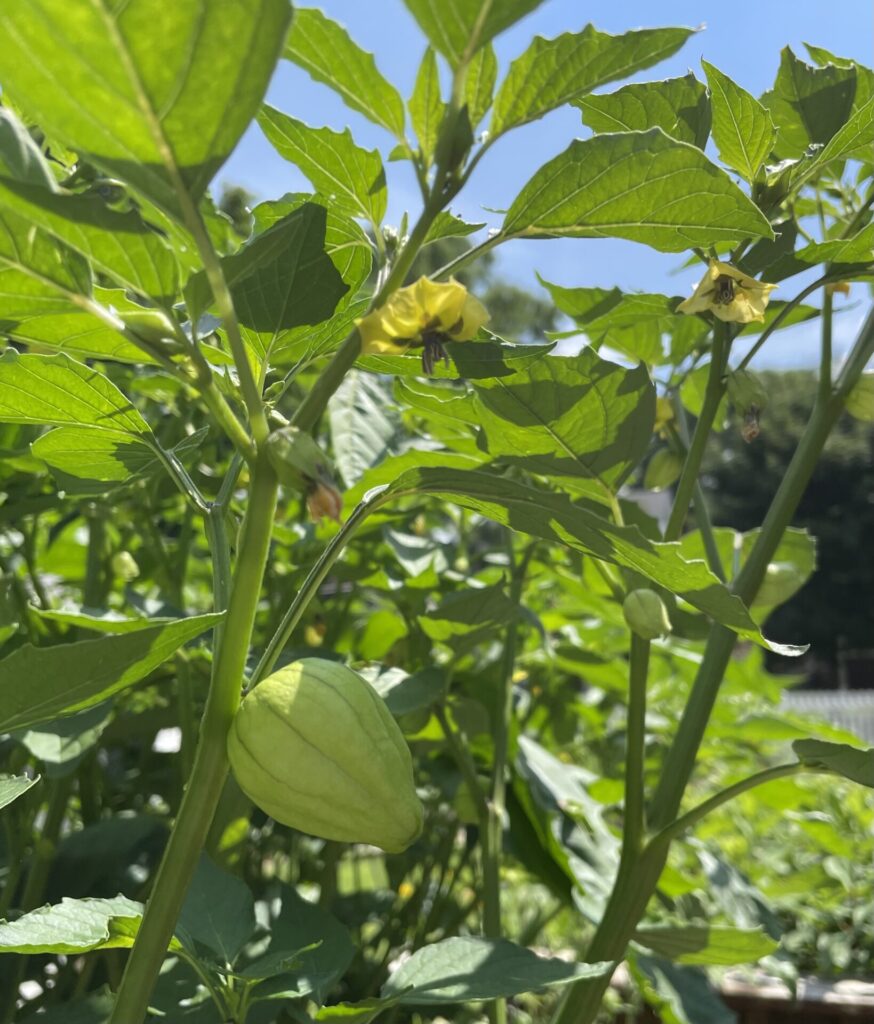The Fruits of Yoga

BKS Iyengar carries forward with the metaphor of the “Tree of Yoga” in our week’s reading. After the very clear description and comparison of roots to branches, the metaphor, in my opinion, becomes a little more difficult. We have to use attention and imagination to appreciate the process of the eight limbs in the form of a tree.
The leaves of the tree are an easy comparison to Pranayama (breath regulation). Leaves photosynthesize light energy into the chemical energy of food. This is the process by which the tree gets its energy from the external universe to live and transform. We as sadhakas (yoga practitioners) utilize the individual breath to transform ourselves through prana, Universal life’s energy. “When we are performing an asana, we can only extend the body fully if we synchronise the breath with the movement…Pranayama is the bridge between the physical and the spiritual” aspects of yoga. In this chapter BKS Iyengar reminds us that we must become aware of the inhalation and exhalation in order to reach the integration of yoga. The inhalation draws awareness from our internal self outward, from the core to the periphery. The exhalation draws awareness from the external self back into the core of our being. This balance of active inhalation and reflective exhalation “sends energy flashing forwards, backwards, upwards and downwards to produce the elixir of life…in our system”. In between active parts of the breath are pauses, kumbhakas, where the union of body to soul and soul to body can be experienced.
In the “Leaves” Chapter, BKS Iyengar also uses an ancient Indian story of the churning of Mt. Meru to explain Pranayama, highlighting the action of the spine and the breath churning within our embodiment to produce the elixir of life. I think this story is more understandable with a lot more interpretation, including description of the energetic nadis and chakras that run along our spines. Google AI actually came up with a great overview, but you can search many versions of this story as you please…
SAMUDRA MANTHANA from the vishnu purana
So how do we protect and utilize this life energy of prana that is spread throughout our embodiment with asana and pranayama? We must find a way to keep our energies focused toward the growth of the fruits of yoga, not dispersed and depleted toward all the sensory pleasures of the external world. This is the bark of Pratyahara. The bark of the tree protects the tree from invasion of outside disruption and disease. The discriminating intelligence of Pratyahara keeps our senses engaged toward the source of our Self, quieting the fluctuations of our habitually distracted mind and guiding us closer to the pure unchanging consciousness. Discrimination keeps us from being a slave to our memories and impulses, craving for more of something we loved or avoiding any discomfort. Pratyahara harnesses the senses in order to focus the mind toward the mental state of Dharana.
BKS Iyengar compares Dharana to the sap of the tree, but this is where I feel like more clarity is needed. Prashant Iyengar spoke on Saturday, July 5th, on the inability of distinguishing the last three limbs of yoga – Dharana, Dhyana, and Samadhi – as individual practices. Put together they are Samyama, integration. For these, BKS Iyengar brings us back to asana to describe these three elements of an integrated process.
As we learn an asana, it is important to bridge the gap from external to internal awareness, to not focus only on the actions of the limbs or breath, but to focus the senses and the mind toward each and every part of our embodiment (Pratyahara). Like the sap that runs through the vascular system of the tree to maintain life, becoming aware of how each limb, cell, nerve, emotion, mental state and intelligence runs through any asana brings one-pointed awareness. This is Dharana. It takes constant concentration and direction of thought back to each and every point of our being to connect all the threads of awareness into a whole asana. Like the sap fills the tree, this one pointed awareness of the many combine to fill and feed our whole consciousness.
Dhyana (meditation) happens. Like a flower blooms from all the components of a tree, dhyana blooms from all the preceding limbs of yoga. Dhyana in asana is “meditation in action”, an all-pointed awareness “where all one’s vehicles – the organs of perception, the organs of action, the mind, the brain, the intelligence, the consciousness, and the conscience – are all drawn towards the core of the being without any division in that state.” This happens if we are able to just “be” in the space between sensing and acting, to sit in the fullness of pure awareness. Dhyana, like a flower, is a delicate and beautiful sattvic (balanced and light) state of being.
Samadhi is the fruit of yoga! The fruit arises from the flower and nurtures the seed, the essence of the tree itself. Samadhi is experiencing “the absoluteness of oneself”, the sweet result of fully connecting to and reuniting with the essence of our True Self. BKS Iyengar reminds us to catch the moments of awe before we begin to name those things that bring awe. We must search for the experience of awe within ourselves – without name, without memory, without grasping for the past or the future. BE in AWE!
True sadhana (practice of yoga) is not mechanical repetition of action, but awareness of our total experience. Seeing ourselves through all the limbs of yoga, rubbing against all aspects of growth and transformation, we alone are the ones to ultimately know the final fruit and essence of seed that lies within.